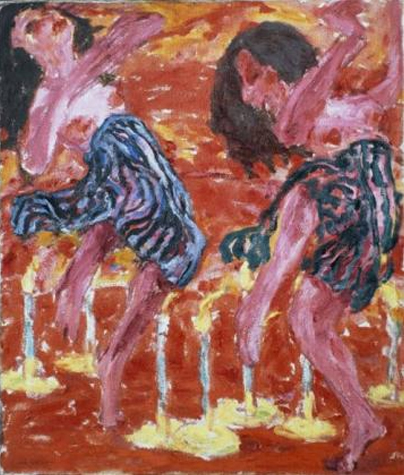Emil Nolde put instinct before intellect in his search for spiritual truths and artistic excellence. By Andrew Graham Dixon
Three years after the end of the First World War, Emil Nolde was moved to paint a picture of the fall of man. The result is odd but arresting, a typically Noldean essay in vigorously tasteless painting. Eve is a gigantic orange blob of remorse with staring sky-blue eyes, prominent red lips and redder nipples; Adam is a cartoon figure in a cartoon sulk; and the serpent coiled round the Tree of Knowledge resembles a soft toy with a goofy grin. The picture looks like a copy of a Gauguin painted from a reproduction by a juvenile myopic using a stick instead of a paintbrush. Nolde called it Paradise Lost, surely not in tribute to John Milton.
"Instinct is 10 times stronger than knowledge," the painter once said, and he spent his life trying - with some success - to make his pictures look more passionate than thoughtful. The Whitechapel Art Gallery's current exhibition of Nolde's art is the first showing, in this country, of a broad spectrum of his painting, and it turns out to be a sporadically impressive demonstration of his unevenness. There is a very fine line dividing Nolde the father of German Expressionism from Nolde the pavement artist, and it is frequently crossed. But while the barbarism that he so assiduously cultivated in himself was too often forced, at least he never descended to the stale, repetitive formulae of his greatly overrated contemporary and co-Expressionist, Edvard Munch. Nolde's most redeeming characteristic was his perpetual readiness to take risks, to fall flat on his face time and time again in the hope that, just occasionally, he might pull off a good picture.
At his sloppiest and most calculatingly...


